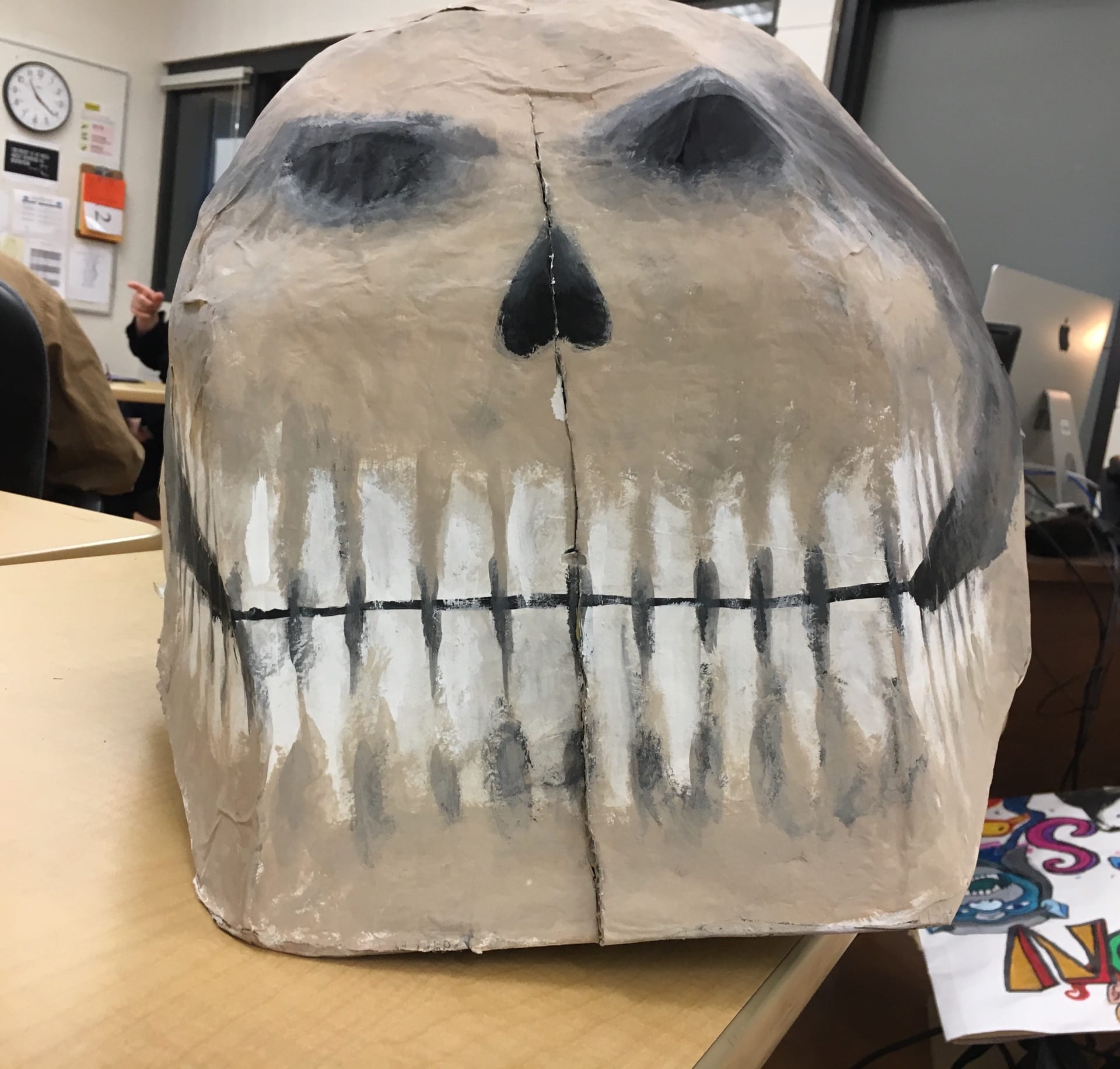What’s good fellow bloggers. As you can tell by my creative title, we’re tackling the big fish in this post. A topic so big it requires 2 posts to cover it. That is, of course, Destination Imagination.
For those of you who don’t know, Destination Imagination is a non-profit organization that focuses on equipping kids with the skills they will need later in life, and helping build STEM skills. A more detailed explainationncan be found in the “About” section of their website.
https://www.destinationimagination.org/vision-mission/
Our Group
This was our second year of DI, so we were used to the process. We started by looking over the challenges for this year and picking teams. My team consisted of Sam, Amelia R, Alex, and Caleb. After getting into groups, we picked our challenges, and we ended up with out uncontested first choice, Scientific, AKA Medical Mystery. Here’s a helpful video explaining the rules of our challenge and what we’re trying to achieve.
Now, I could go on and on about our solution, and I will, but for you, the audience’s sake, I’ll try to keep it short to save room for my reflection. I’ll be splitting it into four parts, one for each aspect of our challenge. Ok. Let’s begin.
Story
For the story, we first had to pick our disease. We originally wanted to make up a disease (which we aptly named D.E.A.T.H), but after some help from our teacher, we decided to pick a real disease. Lucky for us, this disease, musical hallucinations, ended up being the basis of our team choice element.
After the disease was decided, we wrote our story. The basis of our story was:
Mee, the patient, (played by Sam), was on vacation in Costa Rica with friends Meme (Amelia) And Moses (Caleb) when they go to a bar and order potent cocktails from Bartender Martin (Alex). They wake up to Mee having musical hallucinations. He is taken to Dr. Martin (Alex again) and are informed he has musical hallucinations. They do not take it seriously, and go on a tour led by Mr. Martin (Alex, again). The get lost but somehow find the witch doctor (Jason)’s hut in the forest. The witch doctor shows a model of the disease and the effects in the human head, and guides them to a temple. Here, they find medicine (antidepressants) and leave. They go home.
This story went through multiple revisions, but this is the final product. Well, until provincials I guess.
However, we also needed to create a backdrop. We started with a complicated rotating backdrop, but quickly realized that was too complicated, so we made a simple wooden frame and two large sheets of paper with a room drawn on one, and a forest drawn on another. Sorry for the lack of pictures, we don’t realky have any. You’ll get to see the backdrop and story in the performance.
Sympt-O-Matic
The Sympt-O-Matic was another important part of our challenge. It involved creating a model using technical methods to show the effects of the disease on a human patient. For us, our disease mostly affected parts of the head, so the Sympt-O-Matic was a human skull.
The plans started out as putting a petestal inside a papier-mache skull, with a tissue paper brain and lights lighting it up. However, we forgot all about the petestal, so we made a new design. The new design consisted of the skull, split in half, with paper lining the sides with drawings of the parts of the brain and ear with lights on the inside. This design worked out pretty well.
Double Vision
Double Vision was the third main aspect of our challenge. It was called, as you can see from the title, Double Vision. This was the… how do I say this…. most difficult to understand aspect.
This featured one scene in any part of the performance that is shown in “double vision”, which involves showing a scene in two different perspectives. That’s it. Very…. interpretive.
Our double vision went through many stages, like a metamorphosis. It began as a simple hallucination, as our disease had been made up. After changing our disease to musical hallucinations, it turned into a scene in which Dr. Martin explains the effects of musical hallucinations in two ways, with Mee on one side and a regular patient on the other side. Don’t understand? Me neither. To this day, I still have no idea what that whole thing was about.

qimono /pixabay
Eventually, we figured out it didn’t have to be about the disease. It could actually be about some part of the story, so we decided to separate the stage, and have Mr. Martin the tour guide getting separated from the group and the perspectives of each party.
Team Choice Elements
If you’ve read my last DI post, you know what these are, but I’ll explain it anyways. Team choice elements are meant to show off your team members’ skills and abilities. You use two of these in your presentation.
Our first team choice element revolved around ya boi’s MAD oboe skillz. Sorry about that. But, it’s pretty obvious where this came into place. Musical hallucinations? Oboe? Music?
Spoiler, we used the oboe music as sound effects for musical hallucinations.
Our second team choice element was costume design, or more specifically, face painting. This came into play during the creation of the witch doctor. The witch doctor’s costume consisted of me, dressed in big ol’ black robes, with a big ol’ skull painted on my face.
Yeah sure, I looked like the grim reaper, but it was all good, as it really helped establish the witch doctor’s “mysterious vibe”. Unfortunately, I forgot to take photos of the process, so you’ll have to watch the video of our performance to see the witch doctor in all of his magical glory,
The Performance
So, DI came pretty quick, and before you could say Musical Hallucinations, DI was at our school and our performance was in 3 hours. There weren’t many things to do on the day, except rehearse lines. Then, we got ready in the prep area and we got ready to perform. Here’s the performance.
Reflection
My DI experience this year has taught me a lot.
During the main building process, communication was crucial, and that wasn’t something I think we really excelled at. We rarely communicated, and that led to us never actually meeting up. So, we split up the work, which ended in disaster, as a lot of our jobs were two-people jobs.
This lack of communication also led to a lot of procrastination. Not good. We ended up leaving our Sympt-O-Matic’s finishing touches, the backdrop, and a lot more to the last minute, ending up in a lot of stress.
However, DI also taught me a lot about medicine, such as parts of the brain, ear, and what each of those parts do. I also learned about mental disorders, and how antidepressants have many, many usages. DI also taught me about cooperation, as we were able to work together in the last minute to pull everything together.
This, of course, isn’t the final DI post. Beware, provincials is coming.
This is Jason, signing off.


